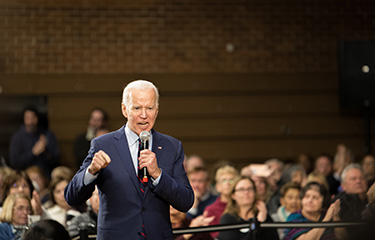The administration of U.S. President Joe Biden announced a framework for distributing USD 2.6 billion (EUR 2.4 billion) in funding for coastal resilience and fisheries support made available through the Inflation Reduction Act (IRA).
The money will go toward fisheries conservation, Tribal priorities, and a new competitive grant program to develop regional approaches to climate resilience.
“Under President Biden’s leadership, we are making the most significant direct investment in climate resilience in the nation’s history,” U.S. Secretary of Commerce Gina Raimondo said. “As part of our more than USD 2.6 billion investment in regional coastal resiliency and conservation projects, we will be dedicating USD 390 million [EUR 364 million] directly to Tribal priorities for habitat restoration and bolstering fish populations, and supplying crucial funding to ensure our coastal communities are better prepared for the effects of climate change."
Key spending under the framework includes:
- USD 390 million (EUR 364 million) for tribal priorities, such as habitat restoration, fish passages, hatcheries, and Pacific salmon;
- USD 349 million (EUR 326 million) for projects to conserve fisheries and protected species in coastal regions;
- USD 575 million (EUR 537 million) for the Climate Resilience Regional Challenge, a new competitive grant program;
- USD 100 million (EUR 93 million) for Ocean-Based Climate Resilience Accelerators, a new competitive program to support businesses with coastal and ocean-based resilience projects; and
- USD 60 million (EUR 56 million) to support climate-ready workforce initiatives.
“We are investing in America and empowering communities to understand and take action to address their risks to climate change and ensure they continue to thrive now and in the future,” NOAA Administrator Rick Spinrad said. “We can’t do it alone and look forward to engaging partners, building resilience, and supporting conservation with this funding.”
In addition to the USD 2.6 billion (EUR 2.4 billion) framework announced by the White House, the IRA allocated USD 200 million (EUR 187 million) to improve NOAA’s climate and data services.
Around USD 240 million (EUR 224 million) of the funding set aside for tribal priorities will go towards salmon hatcheries for tribal governments. The government plans to issue 638 contracts beginning this summer to distribute that funding. Another USD 60 million (EUR 56 million) will go toward hatcheries established under the Mitchell Act. USD 70 million (EUR 65 million) be dedicated to habitat restoration and fish passages, while another USD 20 million (EUR 19 million) will go to capacity building and science support.
The funding comes as tribes are looking for increased representation in NOAA Fisheries decision-making, an issue highlighted by U.S. Rep. Mary Peltola (D-Alaska) in an interview last month.
“One of the shortcomings that I think we've seen in our current structure is that tribes are not at the table. Indigenous people are not at the table,” she said. “And we're not saying that we want to change the composition, to remove all of the other user groups and all the other folks that are representing. We're just saying, we also want to be at the table. We don't want to outnumber anybody. We don't want anyone to feel surrounded by us or taken. We don't want to do a hostile takeover. This isn't a power grab. We just want a seat at the table. We just want to be part of the discussion and at the same level that the other folks are.”
Last month, the Kuskokwim River Inter-Tribal Fish Commission joined a collection of Alaska fishing groups welcoming NOAA Fisheries’ announcement that was considering changing national standards concerning equity in the representation of local fishing communities. NOAA Fisheries has not adequately considered tribal needs in managing fisheries in Alaska, Kuskokwim River Inter-Tribal Fish Commission Executive Director Kevin Whitworth said. Instead, the agency has prioritized industrial trawlers to the detriment of local fishing communities.
“We’ve seen multiple species of salmon dramatically decline on the Kuskokwim in recent decades, including chinook and chum salmon, both of which are caught as bycatch by the Bering Sea pollock trawl fleet,” Whitworth said. “These declines are devastating for our communities and our ways of life, and they’re happening in part because marine managers at the North Pacific Fishery Management Council and NOAA Fisheries do not equitably consider our traditional foods or our Tribes when making decisions about pollock allocation. Revising these national standards may bring the change we need to see in fisheries management to protect our salmon and cultures.”
Photo courtesy of Trevor Bexon/Shutterstock







